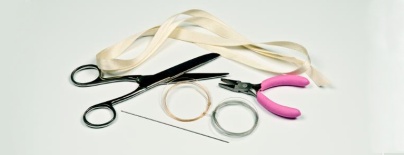The headband consists of a sewn lacy band and a ribbon which is tied under the hair. The lacy band consists of five identical repeating motifs and it consists of three fragments. Everything is sewn together and connected. One larger flower is omitted in the fifth outer section. A bracelet could also be made in the same way. In this case, only three of the lacy motifs would be repeated. We have selected a refined creamy color for our headband which can therefore be a suitable wedding accessory. The range of opaque and transparent colors of the glass or color finishes will enable you to give free reign to your creativity and to create your own color combinations. The headband can then suddenly become a flowering meadow of pastel colors. We wish you many creative ideas when working with Czech beads and seed beads from the PRECIOSA Traditional Czech Beads brand™.
She is able to switch from luxurious and extravagant fashion show pieces to the preparation of hobby projects,
Learn MoreA 0.20 mm line or nylon thread, a thin 0.24 mm wire, scissors, a long threading needle, flat nosed pliers, a 1 cm wide ribbon, 1 m long

Each of the five sections is sewn from one large flower, three smaller flowers, two outer leaves and a further two smaller flowers and two rocaille leaves. Start with three smaller flowers and their two leaves. Connect the fragment of two flowers and two leaves so that the point of the lower leaf is connected with the following larger lacy section. Sew the large flower and its protrusions last.
Share this project with your friends
This website is using cookies
To improve our services and provide information that suits your interest, we use the advanced website traffic analytics tools. However, we need your consent. More information about how we process and protect your data can be found in the privacy statement. We ask you for approval of the terms.